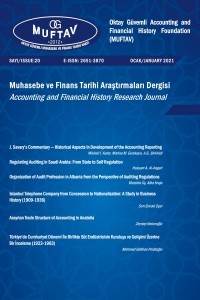Using Pacioli’s Pedagogy and Medieval Text in Today’s Introductory Accounting Course(*)
When double entry bookkeeping emerged in the late 13th century, students of accounting were mainly sons or employees of merchants and other craftsmen. They were highly motivated to learn and had ready access to real examples of what they were learning. Students today see little relevance in learning double entry bookkeeping and find it difficult to learn how to prepare journal entries correctly and, in particular, struggle with the first stage of the double entry process: identifying which accounts are to be debited and which are to be credited for each transaction. One possible solution to this situation, which can be identified in the literature, is to embed the topic within its historical foundation. This paper reports on an attempt to do so using the first printed instructional text on the subject (Pacioli 1494) as the principal textbook on a 20-hour component of the introductory financial accounting course in a U.K. undergraduate accounting degree program. Instruction followed the pedagogy presented by Pacioli and only minimal additional costs to faculty were incurred. The innovation was successful. In their assessment, students not only demonstrated that they had learnt, understood, and knew the correct entries to make into the Journal, they did so correctly to an extent that no-one could have foreseen.
Keywords:
Cognitive Apprenticeships, Double Entry Bookkeeping, History, Introductory Accounting Course, Pacioli.,
- ISSN: 2146-4928
- Yayın Aralığı: Yılda 2 Sayı
- Başlangıç: 2011
- Yayıncı: Oktay Güvemli Muhasebe ve Finans Tarihi Vakfı (MUFTAV)
Sayıdaki Diğer Makaleler
Alan SANGSTER, Ellie Franklin, Dee Alwis, Jo Abdul-Rahim, Greg STONER
Türk Ticaret Kanunlarının Türk Muhasebe Düşüncesinin Gelişmesindeki Etkileri
Oktay GÜVEMLİ, Batuhan GÜVEMLİ
Muhasebe Teori ve Uygulamalarından Beklentiler
Manas Destanı’nda İktisadi Hayat ve Muhasebe Bulguları
17. Yüzyılda Anadolu’da Kadın Vakıfları ve Muhasebesi: Tokat Hatuniye Vakıf Muhasebesi Örneği
